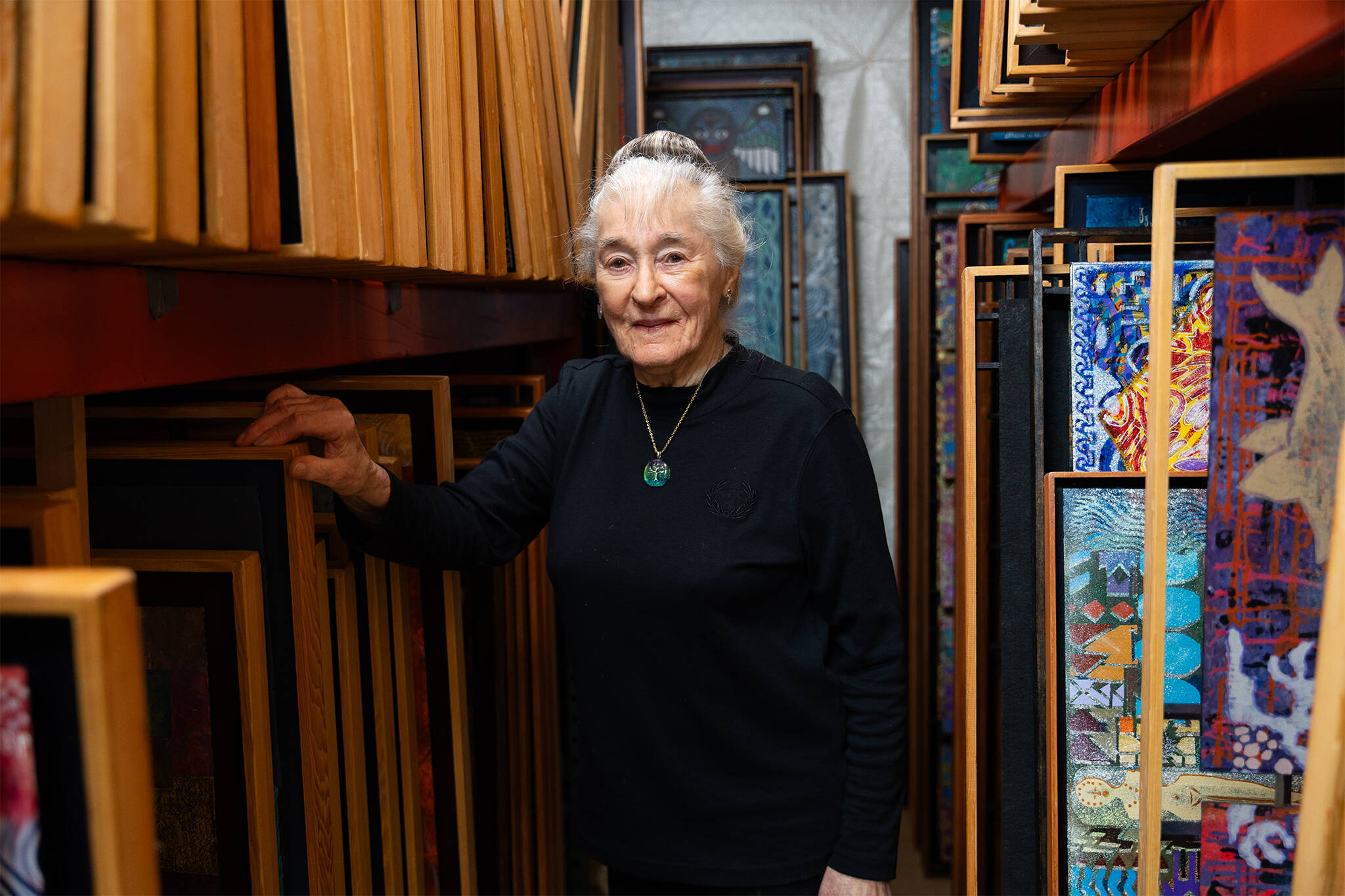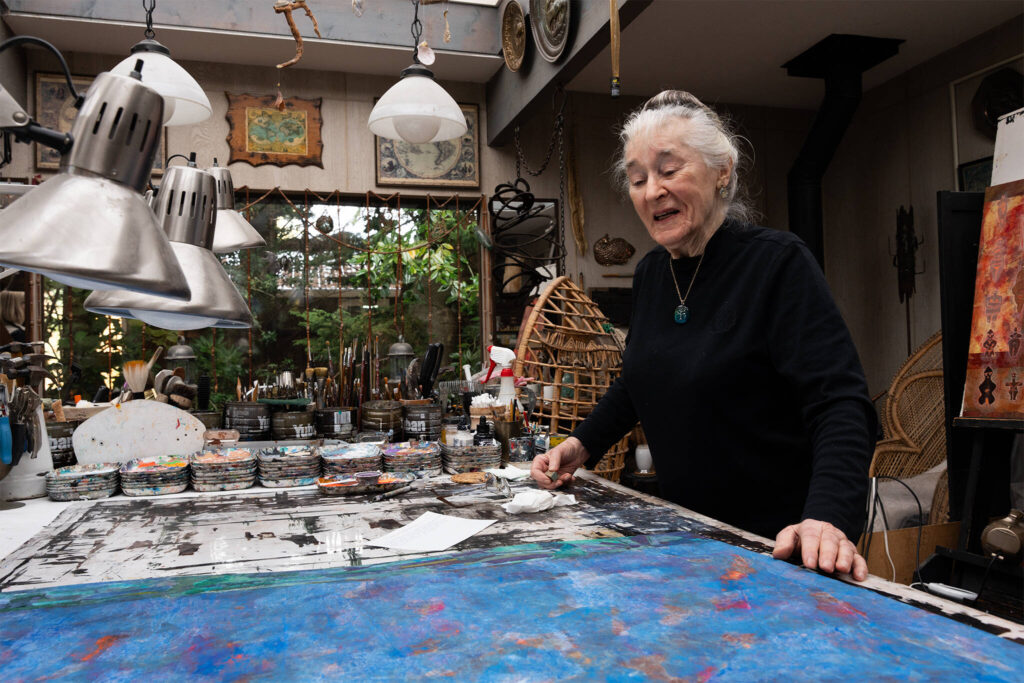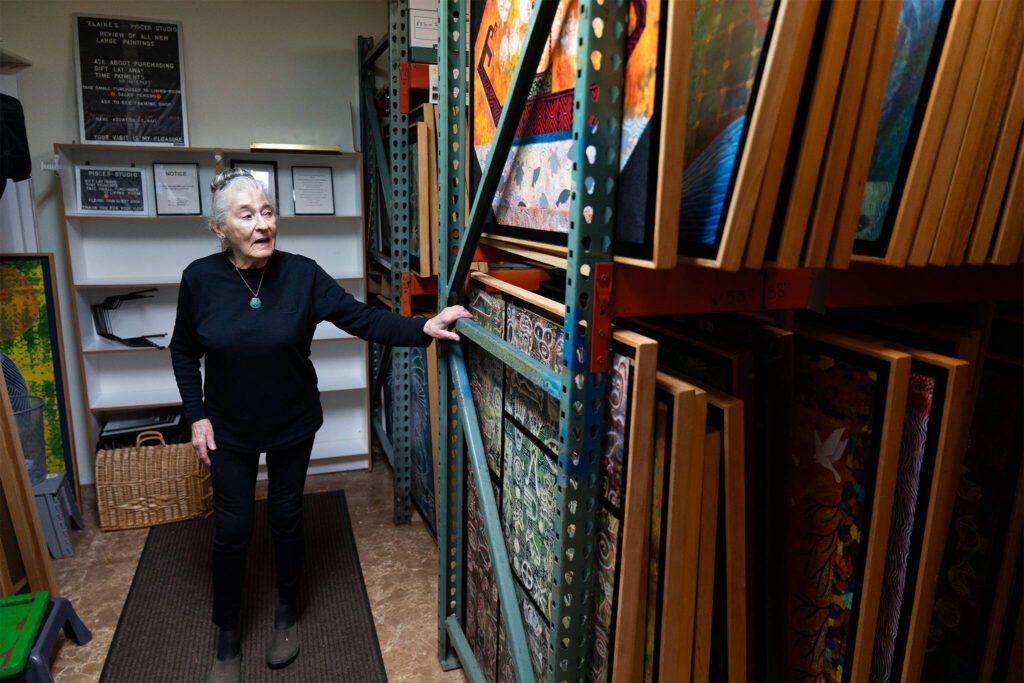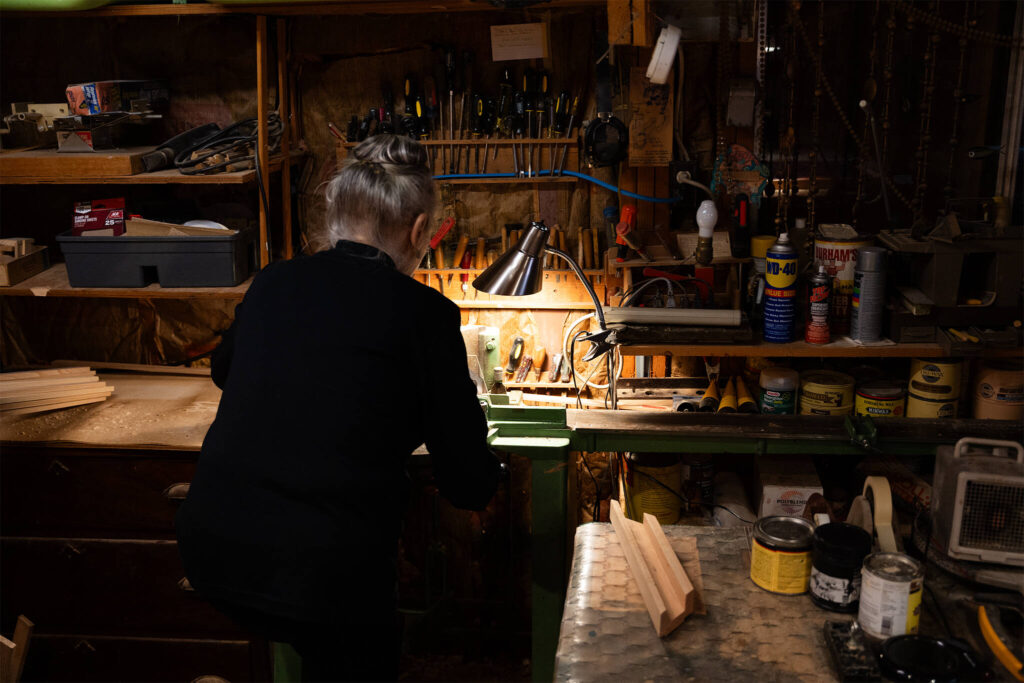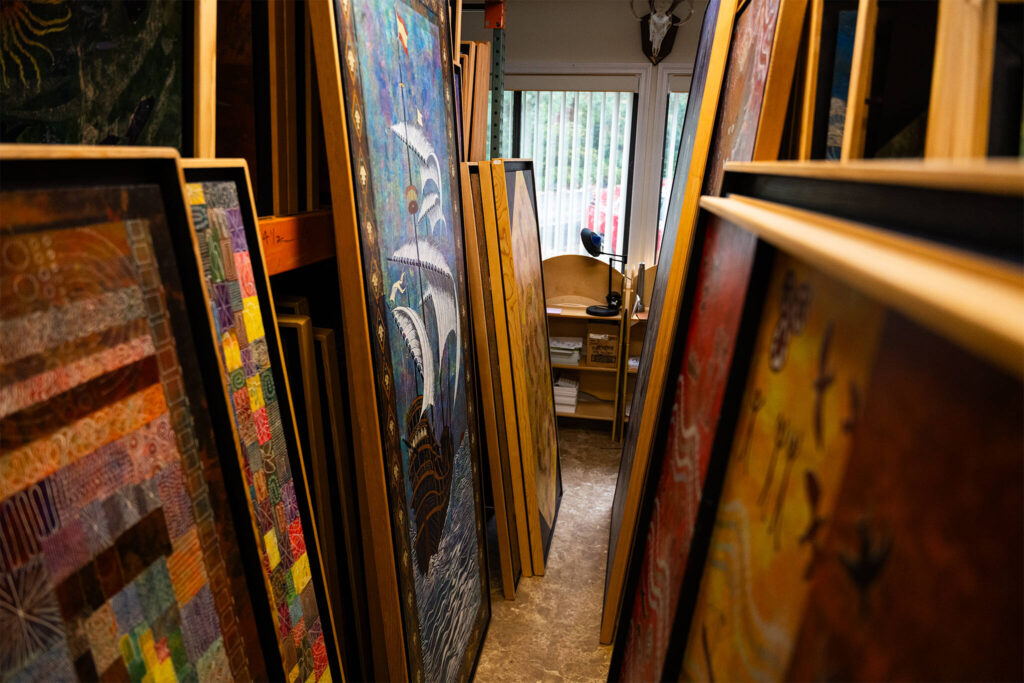EDMONDS — Art was d’Elaine Herard Johnson’s first language.
She was born legally blind, and as a young child she would sculpt objects out of mud and clay. At 4 years old, she started wearing glasses that gave her usable vision. At the same time, she started painting.
Her first solo exhibition was in first grade, when her teacher displayed her fish-bowl-inspired drawings.
“Rather than the ABCs, I drew pictures to tell my stories,” she said.
Now, at 93 years old, Johnson has completed more than 1,200 paintings and is gearing up for her final art exhibition in December. To date, her work has been featured in more than 700 exhibitions.
Her home on the Edmonds bluff overlooking the Puget Sound is also home to her studio, with multiple rooms dedicated to her work. This year alone, Johnson has completed 27 paintings. Since 1971, she’s been adding paintings to her Myth and Lore series.
Her home also houses walls of books, which she uses to research ancient myths for her paintings. She makes sure to write a story to go along with each painting, explaining the ancient lore. One of her most recent works features Inanna, an ancient Mesopotamian goddess who was known as the Queen of Heaven.
Growing up, people often told her that women shouldn’t be artists. Her final exhibit will feature works inspired by goddesses.
“I thought, wouldn’t it be beautiful for me to end with goddesses, being a woman artist, and women now have the right to be artists?” she said.
After high school, she earned a scholarship to Central Washington University to study art education. She went on earn a master’s degree in fine arts from the University of Washington and eventually became an art teacher in Seattle.
Johnson plans to donate her entire estate, including her art, to Edmonds College. Her property is in trust for scholarships through the college’s arts program.
“If I didn’t get a scholarship when I graduated from high school, I would have helped my mother keep a dying dime store going,” she said.
After 24 years of teaching, she was placed on forced disability retirement. When she wasn’t able to work anymore, she began painting full-time.
Now, she spends her days painting with her cat, Fiddle. Johnson started playing the violin in fifth grade and also received music scholarships in college. She played until the ’90s, she said.
“My music also has inspired my art,” she said. “If I struggled with an idea, maybe I’d go play my violin. All music is is a simple little combination of a few notes, expanded, repetition, augmented and finally built as a whole of a statement about something. … That’s what I’m doing visually.”
In her studio, she has multiple drawers of rice paper, which is now hard to come by in large quantities, she said. She performs the entire artistic process by hand, even making her own paints and cutting her own frames. Her favorite tool in her workshop is a frame-cutting machine that creates perfect 45-degree angles.
“I know women aren’t to have shops and tools, but an artist can’t afford to have everything framed,” she said. “So I slowly taught myself.”
Much of her work features symbols of water — from shells to waves and sea creatures. For 20 years, she spent much of her time scuba diving in the San Juan Islands with her late husband, John. She and John got married in 1956, shortly after World War II. They bought cheap suits from the war surplus and taught themselves how to dive.
Johnson’s deepest dive was 100 feet, and she was the first woman to dive with famed explorer Jacques Cousteau, she said. She fell in love with being underwater.
“It was like an underwater garden, everything in slow motion, moving around like ballet dancers, whether it be the kelp beds or the fish darting around — another world,” she said.
d’Elaine and John spent much of their life together outdoors, she said. When he’d go on hunting trips, she’d tag along with an art case her father made for her.
“I’d be left alone, maybe a day, maybe weeks out in nature, doing my art, my reading and research,” she said.
Johnson is proud of creating a style that’s uniquely her own.
“It’s my own handwriting, I’m not trying to paint like so and so, I’m not trying to paint like this movement, I’m not mimicking what everyone else is doing,” she said. “It’s all invention, only one of each painting.”
When she was younger, she accidentally dropped oil into a puddle of water and noticed the shapes and colors they made when they interacted with each other.
“That was the beginning of accidents in my art,” she said, “of not having power over the media, but letting the media work for me wherever I could.”
When she was teaching, she noticed a student had spilled paint on rice paper, and that became a central part of her work.
“Other artists ask, how do you get this effect? That was by breaking all of the traditional rules of schooling and just taking off with inventing,” she said.
Johnson had a part in turning Edmonds from a logging town into an art town, she said. In 2018, Edmonds became the state’s first Certified Creative District.
“Knowing that my beginning as a visual artist was here in Edmonds and then planting the seeds so that we would grow, I thought it’d be nice to have my career end in my hometown,” she said.
At 93, Johnson still paints full-time and has no plans of stopping any time soon. She said she’s more in command as an artist than ever.
“We creative people, it’s an addiction, it’s our language, it’s the way we speak,” she said. “Whether it’s music or the arts or poetry, all of the arts, we express ourselves best through our personal language, our personal handwriting, our stories.”
Johnson’s final exhibition reception is Dec. 6 at Graphite Arts Center at 202 Main Street in Edmonds. A special reception will be held from 5:30-7 p.m., followed by a gallery reception from 7-8:30 p.m. The exhibit will be on display until Jan. 3.
Jenna Peterson: 425-339-3486; jenna.peterson@heraldnet.com; X: @jennarpetersonn.
Talk to us
> Give us your news tips.
> Send us a letter to the editor.
> More Herald contact information.
